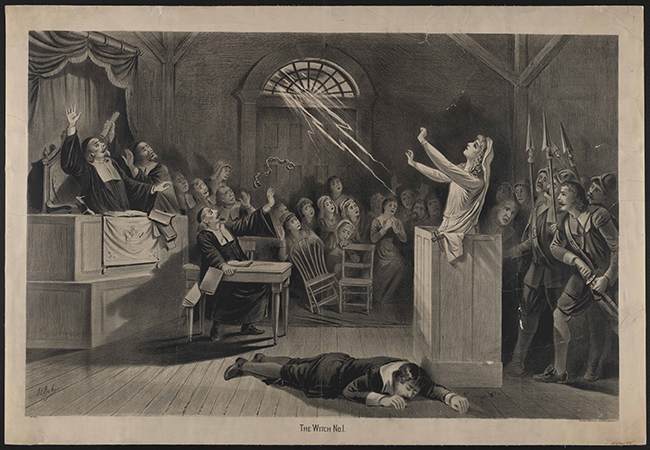Creatures of the Night: Witches
Scattered throughout literature and local legends are figures of mystery and intrigue. There is one who tempts the fates and controls the heavens, but is often mistreated and misunderstood. The Witch has been a prominent figure in spooky tales and horror movies throughout the world for generations. Want to know more about the wicked witch? Although practitioners of witchcraft have existed in dozens of cultures for millennia, we will be focusing on the crowned queen of Halloween horror – the European witch.
Experts report that witches were thought to be an oppression to the invention and spread of the Christianity in the middle ages. Witch figures in the community usually consisted of a woman with feminist tendencies thought to be a disruption, who spread unnecessary chaos. These women tended to be in stout contrast to the ideal image the church was trying to present of the women of the time. Christians of the middle ages typically believed those who revered the natural (the earth, elements, or pagan beliefs) were worshiping demonic figures, or practiced idolatry. This would later go hand-in-hand with the idea and stigmas that are related to witches such as black cats. Many believed that the black cat was actually the witch’s soul roaming about in the night (drawing an interesting parallel to some of the skinwalker legends we discussed in our Werewolf entry). Many witches would be tried and hanged throughout Europe, a stark contrast to the rest of the world where pagan beliefs were accepted. For many years the accusation of “witch” was as powerful a tool for revenge as “communist” was at the height of the cold war. Despite the modern idea of a witch often being synonymous with “hag,” a great many people who were named as witches were vibrant young women.
The hysteria of witches would follow settlers into the new world. One of the most infamous incidents of witchcraft and witch accusations occurred in the Salem Witch Trials. In the 14th century, the belief that the devil could grant power to followers for loyalty emerged and blossomed in Europe. This fear would follow settlers, along with the harsh reality of their new life in Salem following the British and French war in the American Colonies in 1692, experts claim.
Complications of their new life, including a small pox epidemic, fears of attacks from neighboring Native Americans, and general suspicions of neighbors and outsiders, would fuel the trials. In the end over 105 people would be hanged from 1692 to 1693. Modern scientists have concluded that part of the symptoms of the accused “bewitched” might have been caused from consumption of toxic materials around the village.
The story and paranoia of the witch has followed civilizations to even our more modern age. One of the most infamous witch stories occurs within our own state: the tale of the Bell Witch. The Bell Witch is said to reside in Adams, Tennessee. The witch originally visited the family of John Bell, a settler from North Carolina in 1817, and would torment the family until supposedly causing the death of family patriarch John. Reports claim that the witch sang a joyous song over the grave of Bell until the last mourner left the graveyard.
Another popular witch story of our age continues to be that of the Blair Witch. Already spawning both a classic horror film, and a remake this year, the legend of the Blair Witch expands from 1785-1997. Experts claim that the story begins with the banishment of Elly Kedward, who was accused of witchcraft during a particularly harsh winter. Since her banishment, several sightings, abductions, and murders have occurred over the years, some in the name of Kedward, herself. A final sighting in 1994 involving three college students would inspire the ever popular film.
The history of the witch is rich and varied, like many other Halloween figures, and is steeped in fear, paranoia, and tragedy. Halloween lovers can never go wrong learning more about this beloved icon, as it will almost certainly continue to capture the imaginations of generations to come.












